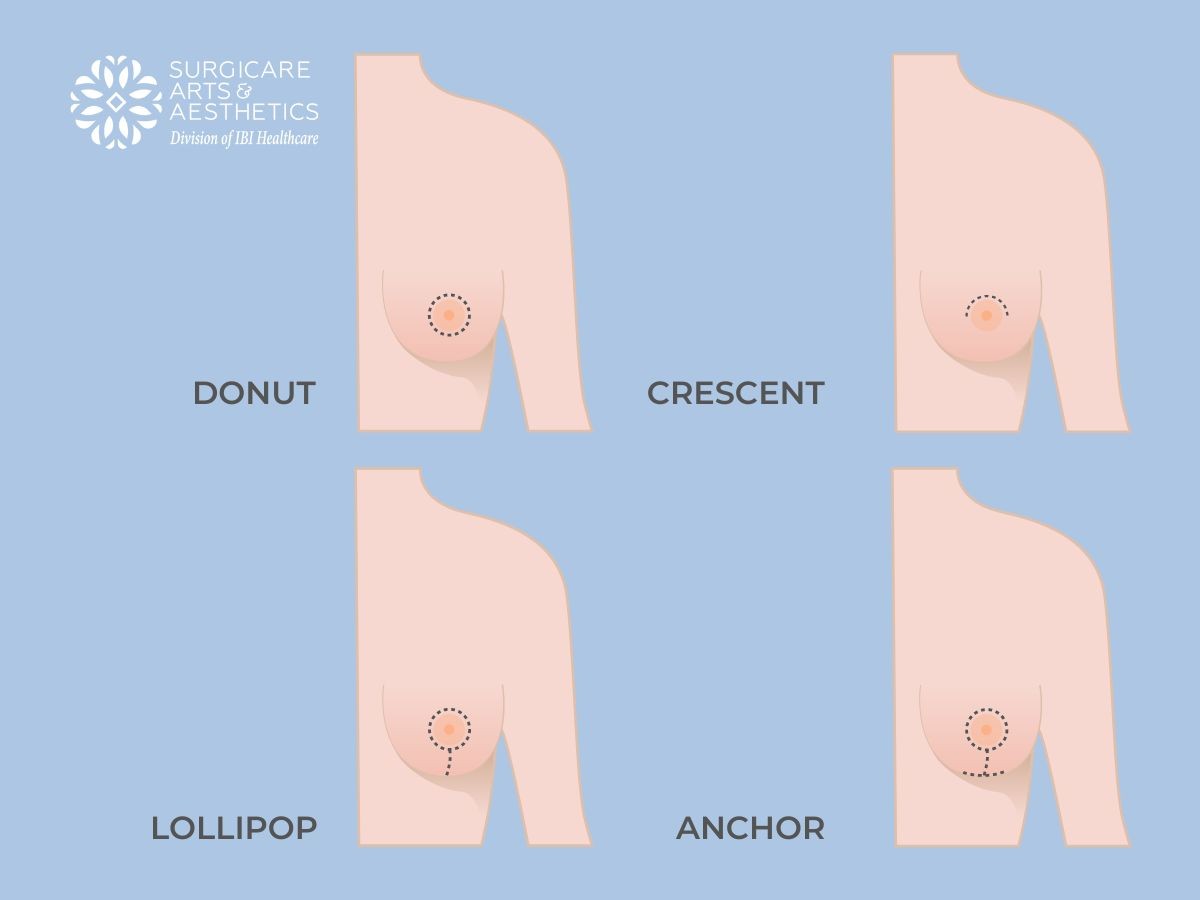Over the years, cosmetic procedures to correct the aesthetics of women’s breasts have significantly gotten better, and techniques continue to improve. There has also been a major shift in the way society looks at those who choose to cosmetically enhance their appearance. Historically, women who chose to undergo breast augmentation were often the targets of gossip or sometimes ostracized.
These days, changing your appearance is more widely accepted, and many women are choosing to go for it. Breast lifts have been growing more popular as women seek to restore their breasts to the way they were when they were younger or before pregnancy and breastfeeding. In fact, research tells us that over the 20-year period beginning in the early 2000s, the number of breast lifts performed in the U.S. alone has increased by over 65%.
When women come in to speak with me during their initial consultation and share their aesthetic desires, they often ask me questions about scarring. They ask me about what is involved in the procedure and recovery too, but it is always interesting that they seem to be more concerned with whether they will have breast lift scars or what their scars will look like in the weeks and months following their surgery.
Today I want to provide an outline of what you can expect in the way of scarring after a breast lift. I will give you an overview that ranges from what you can expect immediately after your surgery to what you can expect from your breast lift scars after one year. I will also give you some tips on what you can do to minimize the appearance of scarring after breast surgery.
What Types Of Incisions Are Made During A Breast Lift?

There are three different techniques used when performing a breast lift. Your surgeon will choose the one that will provide the level of correction needed to accomplish your goals. These incisions include:
The Donut (Concentric)
A circular cut is made around the outside of the areola in a circle, and the surgeon can cut away excess skin to reduce sagging and make the skin tighter. The benefit of this type of incision is that the scar will follow the natural line of the areola and is very well hidden in the area where the color is transitioning from lighter to darker. The downside of the donut incision is that it only offers a small amount of lift and projection and will not provide the desired result for everyone.
The Lollipop (Circumvertical)
This is similar to the donut incision, with the cut running around the circumference of the areola, but it includes an additional incision that runs vertically from the bottom of the areola to the bottom crease under the breast. This technique gives the surgeon better access to remove more extra skin to reshape saggy breast tissue to a higher, more youthful position. It is best for women with mild to moderate sagging where an extensive amount of correction is not needed.
The Anchor (Inverted-T)
This incision technique is used most often for women who have significant sagging and excess skin. The incision is similar to the lollipop, involving an incision that runs around the areola and down vertically under the breast, with an additional incision created along the crease line under the breast. The surgeon is able to remove excess skin, significantly change the shape of the breast, and provide a great deal of lift. This works well for women who have lost a substantial amount of breast volume due to weight loss or pregnancy (nursing). This technique does result in more actual scarring; however, the visual scars are similar to the lollipop, and the results of the breast lift are more dramatic.
Does A Breast Lift Leave Scars?
Yes, unfortunately, breast lift surgery scars are pretty much unavoidable, but I have found most women to be so pleased with their results that they don’t mind the few scars they received during the process. If you are contemplating breast lift surgery, this may be a helpful outline of what you can expect as your breast lift scars heal.
The First Few Weeks
At this point, your incisions probably still look like a thin line, and your breasts are still swollen and bruised. In my experience, most women are uncomfortable but not in significant pain, and their prescribed medication works well to relieve their discomfort. You need to be careful of your incisions because any pressure or tension put on these fresh incision lines can keep them from healing well and could result in scars that are more visible.
Four To Six Weeks
By this time, most patients can get a glimpse of what their breast lift results will look like, and the breast lift scars are healed enough to begin using silicone scar treatments to help reduce their visibility. Your scars may appear pink or red during this time, and your body is busy working to produce collagen to repair the incision sites. When these repairs first start, it can make the scars appear raised or thick, but this should go away over time.
Six To Eight Weeks
This is when your scars may seem to look the worst to you because the repair process is in full swing. The extra blood flow to the incision sites colors the scars a deep red and the newly formed collagen can look rough and jagged. With proper care, these scars can flatten out and fade.
Nine Weeks And Beyond
At around nine weeks, the swelling should have subsided enough that you can begin to enjoy your new breasts. The visible scars are permanent but will continue to fade and become less noticeable. Usually, it takes about two years for scars to reach their final appearance, and using silicone gels and massaging techniques can greatly reduce their visibility.
What You Can Do To Speed Up Healing And Reduce Breast Lift Scars?
Once the surgeon and their team do all they can to hide your incisions as much as possible, you can also take some steps to enhance the process of healing and how your scars will look long term. You can help mitigate the visibility of scarring using the following tips:
- Follow all your instructions for aftercare provided by your surgeon;
- Keep your scars clean;
- Always wear sunscreen;
- Avoid intense exercise after your surgery until your surgeon clears you;
- Once your incisions have begun to heal, you can start applying silicone scar gel, Aquaphor, or Vaseline to help them heal. Using certain massage techniques in conjunction with these topical treatments can help flatten out scars so they virtually disappear;
- Eat a healthy diet and stay well-hydrated;
- Get plenty of sleep;
- Be patient.
Breast lift scars cannot be avoided, but how well you care for your incisions after your surgery will impact your final results. Your surgeon will give you directions on how to take care of yourself after your breast lift, and it is important that you carefully follow them. If you have concerns about the way you are healing after our breast lift, contact your cosmetic surgeon to make sure all is as it should be. By taking an active role in your recovery and preventative measures, your breast lift will be all you wished for, and your scars will be barely visible.
Contact SurgiCare Arts & Aesthetics to learn more about how a breast lift can enhance the way your breasts look and give you back your figure or the one you always longed for. Set up your consultation appointment today!






